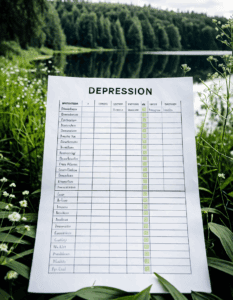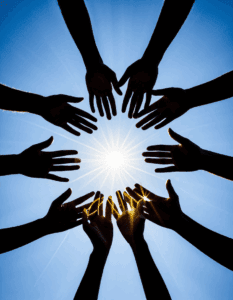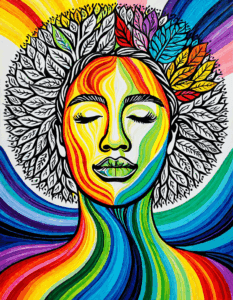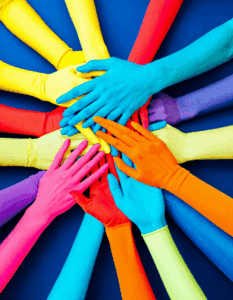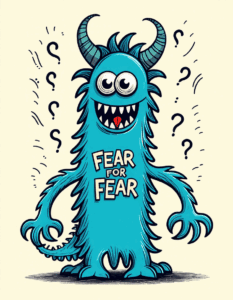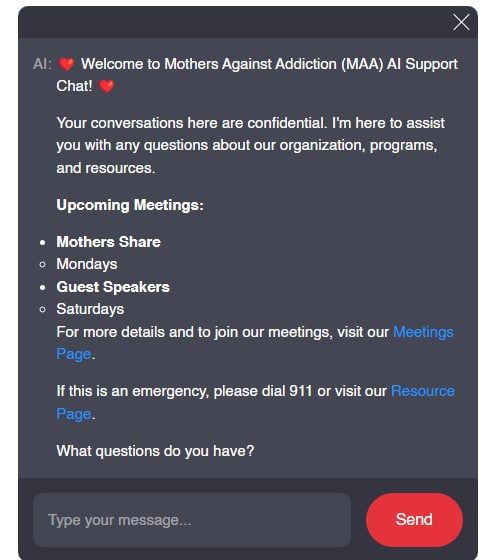The Impact of Addiction in Minority Communities
Understanding the Unique Challenges
Addiction in minority communities often manifests through a web of socio-economic, cultural, and systemic factors that exacerbate the issue. Minority groups, including African Americans, Latinos, Native Americans, and Asian Americans, face unique challenges that can either trigger or worsen addiction problems. Studies have shown that minorities are disproportionately affected by factors such as unemployment, poor access to healthcare, and racial discrimination, contributing to higher rates of substance abuse and addiction.
The complexity of addiction in minority communities cannot be overstated. It’s more than just access to healthcare; it’s about breaking down the barriers created by historical and systemic inequalities. Factors such as financial instability, cultural stigma, and a lack of tailored treatment options all contribute to this crisis. According to SAMHSA, of individuals who need treatment for illicit substance use disorders, whites receive treatment 23.5% of the time, while Black and Hispanic individuals receive treatment only 18.6% and 17.6% of the time, respectively. This disparity highlights the need for a nuanced approach in addressing these challenges.
Historical Context: A Legacy of Inequality
The historical context plays a significant role in understanding addiction in minority communities. The War on Drugs, initiated in the 1980s, had a seismic impact, particularly on African American communities. According to the Sentencing Project, African Americans are incarcerated for drug offenses at nearly six times the rate of whites. This historical disenfranchisement created a cycle of poverty, lack of access to education, and broken family structures, which foster environments where addiction thrives.
It’s crucial to grasp the magnitude of these historical factors. The ripple effect of policies from decades past continues to affect today’s minority populations. For instance, systemic inequalities not only impact access to resources but also instill a sense of hopelessness and mistrust in institutional structures. Addressing these deeper issues is key to breaking this vicious cycle.
Socio-Economic Factors: The Poverty Trap
One of the major drivers of addiction in minority communities is the prevalence of socio-economic hardships. In areas like Detroit and the South Bronx, where the rate of unemployment is notably high, the use of substances as a coping mechanism becomes more common. Financial instability limits access to quality healthcare and addiction treatment services, further deepening the crisis. According to a 2023 report by the National Institute on Drug Abuse (NIDA), minority populations are significantly less likely to receive proper addiction treatment compared to their white counterparts.
Unemployment and underemployment often leave individuals feeling trapped. Financial pressures can lead many to seek solace in substances, forming a destructive pattern. The struggle to achieve economic stability is compounded by limited job opportunities and inadequate social support, reinforcing the cycle of addiction.
Cultural Stigma and Mental Health Barriers
Cultural beliefs and stigma surrounding addiction and mental health can also prevent individuals in minority communities from seeking help. Many communities, such as the Latino community, may view addiction as a moral failure rather than a medical condition, dissuading individuals from seeking assistance. This stigma, coupled with language barriers, leads to underutilization of mental health services. The American Psychological Association (APA) recently highlighted that Latinos are far less likely to receive mental health treatment for substance abuse compared to other racial groups.
The silence surrounding mental health in many cultures can be deafening. The fear of being ostracized or judged can prevent people from reaching out for the help they desperately need. This silent depression is particularly damaging, as undiagnosed or untreated mental health issues often lead to more severe addiction problems.
Success Stories: Community-Based Solutions
Despite these challenges, various grassroots organizations and community-based initiatives have made significant strides in combating addiction in minority communities. For example, the Native American Rehabilitation Association (NARA) in Portland, Oregon offers culturally sensitive rehab programs that incorporate traditional healing practices. Their programs have seen higher success rates because they resonate with the cultural values and beliefs of the participants.
Similarly, the Latino community in Los Angeles has benefitted from the efforts of Homeless Health Care Los Angeles (HHCLA), which provides harm reduction services specifically tailored to the needs of Latino residents. These stories illuminate the power of culturally informed approaches in healing and recovery. Success isn’t just in the numbers but in the restored lives and communities that these programs nurture.
Innovations in Treatment and Education
New approaches in addiction treatment and education are also helping to change the narrative. Telemedicine has gained traction as a means to break down barriers to access. Platforms like Talkspace and BetterHelp are offering bilingual therapy services that accommodate both English and Spanish speakers, making mental health resources more accessible. Additionally, educational campaigns led by influencers and celebrities from minority backgrounds, like Demi Lovato and Dwayne Johnson, are raising awareness and reducing stigma surrounding addiction.
Technological advancements are a beacon of hope, especially in areas with limited physical access to treatment centers. Virtual platforms provide an invaluable resource for those seeking help but hindered by geographic or socio-economic constraints. These innovations could bridge the gap, ensuring that more individuals receive the support they need.
Policy Changes and the Road Ahead
Recent policy changes and legislative efforts provide a glimmer of hope. The Biden Administration’s emphasis on equitable healthcare and criminal justice reform includes initiatives aimed at addressing the racial disparities in addiction treatment and incarceration. Grant programs under the Substance Abuse and Mental Health Services Administration (SAMHSA) specifically target minority communities to enhance accessibility to addiction treatment services. These policy changes are steps in the right direction.
There’s a long road ahead, but progress is happening. Policy reforms can lay the groundwork, but real change occurs at the community level, where the impact of these policies will be felt most strongly. Awareness and advocacy are vital in ensuring these policies translate into real-world benefits for those who need them most.
Towards a Holistic Approach
Understanding and addressing addiction in minority communities requires a multi-faceted approach that considers historical context, socio-economic factors, cultural stigma, and innovative solutions. By fostering community-based initiatives and leveraging technology, while pushing for meaningful policy changes, we can chart a course to a more equitable and effective response to addiction. Awareness, empathy, and concrete action are essential as we work together to break the chains of addiction and build healthier futures for all communities.
For more insights into the impact of addiction, explore our resources here.
Let’s champion these initiatives and keep the conversation going. Every step we take, no matter how small, brings us closer to an inclusive society where everyone has an equal opportunity to thrive. Let’s make this journey together, one of hope, resilience, and transformation. Keep sharing, keep advocating, and remember – no one is alone in this fight.
Addiction in Minority Communities
Unequal Struggles
Did you know that minority communities often face unique struggles when dealing with addiction, compounded by systemic barriers and lack of resources? For instance, a map Of Baltimore shows how neighborhoods with higher minority populations often have fewer healthcare facilities and support services. This makes it even harder for residents in these areas to get the help they need to combat addiction. Shocking, right?
Intersection of Identities
Another layer to consider is how addiction in minority communities intersects with other identities, such as sexual orientation. LGBTQ+ individuals face particular hardships and stigma, as highlighted in this article about Lgbtq+ addiction Issues. The marginalization and unique stressors faced by LGBTQ+ members can often drive higher rates of substance abuse. It’s a vicious cycle that demands more attention and inclusive support systems.
Rural vs. Urban Dynamics
You might be surprised to learn that addiction isn’t just an urban issue. Addiction in rural Communities presents its own set of challenges, often mirroring those found in minority communities, like limited access to treatment centers and social services. Plus, the stigma in small, tight-knit communities can be suffocating, making recovery an uphill battle. Pretty eye-opening, huh?
Women in Minority Communities
Lastly, women in minority communities have their own unique hurdles. Facing both racial and gender discrimination, their struggles are compounded further. For example, explore some of Women ’ s unique Challenges in addiction. Between caretaking responsibilities and societal expectations, minority women often delay or avoid seeking help, which sadly results in worse outcomes.
Trivia time! Did you know that the socioeconomic impact of addiction on minority communities can even affect employment opportunities? A need for Verification Of Employment often uncovers the blemishes of past struggles, making job acquisition tougher. This interconnected web of issues shows why addressing addiction in minority communities is so crucial.

What are the racial and ethnic disparities in substance abuse treatment?
Whites receive treatment for illicit substance use disorders 23.5% of the time, while Black and Hispanic individuals receive treatment 18.6% of 17.6% of the time, respectively. This shows significant disparities in accessing treatment services.
What are sociocultural views of addiction?
The sociocultural model suggests that societal standards and cultural norms influence addiction. For instance, the way drinking is perceived in the U.S.—often seen as a source of amusement and widely tolerated—can contribute to substance abuse.
What groups are most affected by substance abuse?
Teenagers and people with mental health disorders face higher risks for drug use and addiction compared to other groups. They are particularly vulnerable due to ongoing developmental and psychological changes.
What effect does substance abuse have on communities?
Substance abuse can have a ripple effect, causing those affected to become alienated from peers and disengage from community and school activities. This deprives the community of their potential positive contributions, creating a cycle of stigmatization and isolation.
Which racial ethnic group is most likely to have members with substance use disorders?
Substance use disorders are prevalent across all racial and ethnic groups, but certain groups face more barriers to treatment. Whites are slightly more likely to receive treatment than Black and Hispanic individuals.
What are the demographic factors contributing to drug abuse?
Demographic factors like age, mental health status, and socioeconomic background contribute to drug abuse. Teenagers and those with mental health disorders are especially at risk, as are individuals from disadvantaged backgrounds.
What are the sociological causes of addiction?
Sociological causes of addiction include societal norms and the influence of peer groups. For example, cultures that glorify or normalize heavy drinking can contribute to higher rates of substance abuse.
What are the socio cultural and environmental causes responsible for addiction?
Socio-cultural and environmental factors, like community norms, family dynamics, and availability of substances, play significant roles in addiction. Environments that normalize substance use or offer easy access to drugs make individuals more susceptible.
What role does society play in addiction?
Society shapes addiction by setting cultural norms and expectations. If a culture normalizes substance use, like binge drinking in social settings, individuals are more likely to see it as acceptable behavior.
Who are the most vulnerable to addiction?
Those most vulnerable to addiction include teenagers, people with mental health issues, and individuals in stressful or unstable environments. These groups often lack the resources to resist or recover from substance abuse.
Who is the target group of substance abuse?
Teenagers and young adults are particularly targeted by substance abuse due to their developmental stage, peer pressure, and susceptibility to experimentation.
What might be the fastest growing drug problem in the United States?
Prescription drug misuse, especially opioids, might be the fastest-growing drug problem in the United States. The ease of access and misconception about their safety contribute to this trend.
What are the causes of drug abuse in the community?
Causes of drug abuse in communities often include socioeconomic factors, peer pressure, and mental health issues. Limited access to education and opportunities can also make drug abuse more prevalent.
Which consequence of drug abuse most directly affects the community?
Substance abuse leads to community-wide issues like increased crime rates and healthcare costs. The stigmatization of affected individuals can also tear at the social fabric, decreasing community cohesion.
Why is drug abuse a social problem essay?
Drug abuse is a social problem because it affects not just individuals but entire communities. It leads to increased crime, overburdened healthcare systems, and stigmatization, creating a cycle that’s hard to break.
What is racial and ethnic disparities in health care?
Racial and ethnic disparities in healthcare often manifest in unequal access to services, differences in quality of care, and varied health outcomes. These disparities can be driven by socioeconomic factors and systemic biases.
What are the racial and ethnic disparities in end of life care?
In end-of-life care, racial and ethnic disparities can result in underuse of hospice services and pain management, often due to mistrust in the healthcare system and lack of culturally competent care.
What is the racial disparity in medication adherence?
Racial disparities in medication adherence are influenced by factors like healthcare access, cultural beliefs, and provider-patient communication. People from minority groups often face more barriers to consistently taking prescribed medications.
What are the underrepresented racial and ethnic groups in medicine?
Underrepresented racial and ethnic groups in medicine include African Americans, Hispanics, Native Americans, and Pacific Islanders. These groups have historically had less access to medical education and professional opportunities in healthcare.









